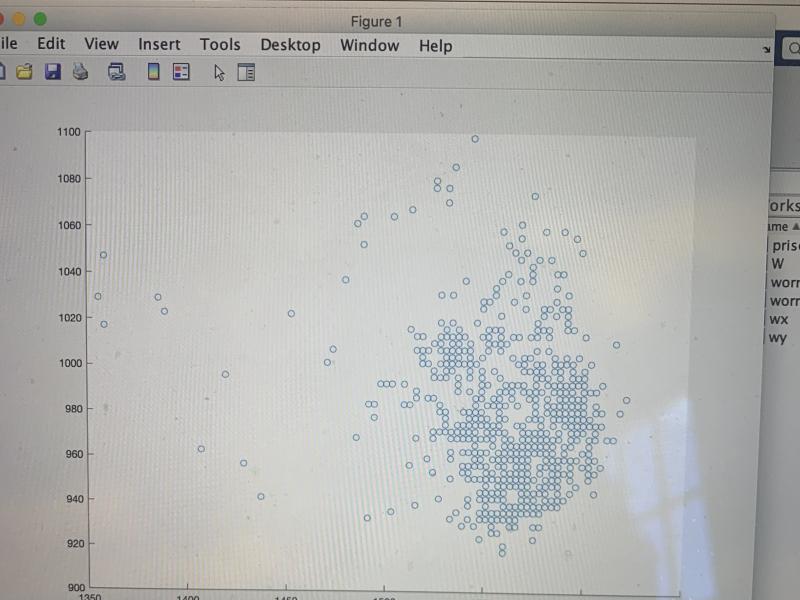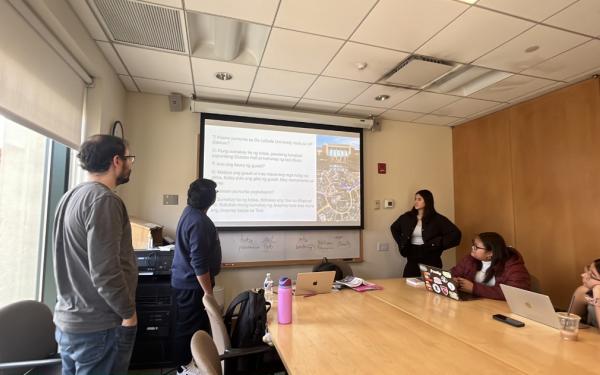How to write an undergraduate university dissertation
Writing a dissertation is a daunting task, but these tips will help you prepare for all the common challenges students face before deadline day.


Grace McCabe
Writing a dissertation is one of the most challenging aspects of university. However, it is the chance for students to demonstrate what they have learned during their degree and to explore a topic in depth.
In this article, we look at 10 top tips for writing a successful dissertation and break down how to write each section of a dissertation in detail.
10 tips for writing an undergraduate dissertation
1. Select an engaging topic Choose a subject that aligns with your interests and allows you to showcase the skills and knowledge you have acquired through your degree.
2. Research your supervisor Undergraduate students will often be assigned a supervisor based on their research specialisms. Do some research on your supervisor and make sure that they align with your dissertation goals.
3. Understand the dissertation structure Familiarise yourself with the structure (introduction, review of existing research, methodology, findings, results and conclusion). This will vary based on your subject.
4. Write a schedule As soon as you have finalised your topic and looked over the deadline, create a rough plan of how much work you have to do and create mini-deadlines along the way to make sure don’t find yourself having to write your entire dissertation in the final few weeks.
5. Determine requirements Ensure that you know which format your dissertation should be presented in. Check the word count and the referencing style.
6. Organise references from the beginning Maintain an alphabetically arranged reference list or bibliography in the designated style as you do your reading. This will make it a lot easier to finalise your references at the end.
7. Create a detailed plan Once you have done your initial research and have an idea of the shape your dissertation will take, write a detailed essay plan outlining your research questions, SMART objectives and dissertation structure.
8. Keep a dissertation journal Track your progress, record your research and your reading, and document challenges. This will be helpful as you discuss your work with your supervisor and organise your notes.
9. Schedule regular check-ins with your supervisor Make sure you stay in touch with your supervisor throughout the process, scheduling regular meetings and keeping good notes so you can update them on your progress.
10. Employ effective proofreading techniques Ask friends and family to help you proofread your work or use different fonts to help make the text look different. This will help you check for missing sections, grammatical mistakes and typos.
What is a dissertation?
A dissertation is a long piece of academic writing or a research project that you have to write as part of your undergraduate university degree.
It’s usually a long essay in which you explore your chosen topic, present your ideas and show that you understand and can apply what you’ve learned during your studies. Informally, the terms “dissertation” and “thesis” are often used interchangeably.
How do I select a dissertation topic?
First, choose a topic that you find interesting. You will be working on your dissertation for several months, so finding a research topic that you are passionate about and that demonstrates your strength in your subject is best. You want your topic to show all the skills you have developed during your degree. It would be a bonus if you can link your work to your chosen career path, but it’s not necessary.
Second, begin by exploring relevant literature in your field, including academic journals, books and articles. This will help you identify gaps in existing knowledge and areas that may need further exploration. You may not be able to think of a truly original piece of research, but it’s always good to know what has already been written about your chosen topic.
Consider the practical aspects of your chosen topic, ensuring that it is possible within the time frame and available resources. Assess the availability of data, research materials and the overall practicality of conducting the research.
When picking a dissertation topic, you also want to try to choose something that adds new ideas or perspectives to what’s already known in your field. As you narrow your focus, remember that a more targeted approach usually leads to a dissertation that’s easier to manage and has a bigger impact. Be ready to change your plans based on feedback and new information you discover during your research.
How to work with your dissertation supervisor?
Your supervisor is there to provide guidance on your chosen topic, direct your research efforts, and offer assistance and suggestions when you have queries. It’s crucial to establish a comfortable and open line of communication with them throughout the process. Their knowledge can greatly benefit your work. Keep them informed about your progress, seek their advice, and don’t hesitate to ask questions.
1. Keep them updated Regularly tell your supervisor how your work is going and if you’re having any problems. You can do this through emails, meetings or progress reports.
2. Plan meetings Schedule regular meetings with your supervisor. These can be in person or online. These are your time to discuss your progress and ask for help.
3. Share your writing Give your supervisor parts of your writing or an outline. This helps them see what you’re thinking so they can advise you on how to develop it.
5. Ask specific questions When you need help, ask specific questions instead of general ones. This makes it easier for your supervisor to help you.
6. Listen to feedback Be open to what your supervisor says. If they suggest changes, try to make them. It makes your dissertation better and shows you can work together.
7. Talk about problems If something is hard or you’re worried, talk to your supervisor about it. They can give you advice or tell you where to find help.
8. Take charge Be responsible for your work. Let your supervisor know if your plans change, and don’t wait if you need help urgently.
Remember, talking openly with your supervisor helps you both understand each other better, improves your dissertation and ensures that you get the support you need.
How to write a successful research piece at university How to choose a topic for your dissertation Tips for writing a convincing thesis
How do I plan my dissertation?
It’s important to start with a detailed plan that will serve as your road map throughout the entire process of writing your dissertation. As Jumana Labib, a master’s student at the University of Manchester studying digital media, culture and society, suggests: “Pace yourself – definitely don’t leave the entire thing for the last few days or weeks.”
Decide what your research question or questions will be for your chosen topic.
Break that down into smaller SMART (specific, measurable, achievable, relevant and time-bound) objectives.
Speak to your supervisor about any overlooked areas.
Create a breakdown of chapters using the structure listed below (for example, a methodology chapter).
Define objectives, key points and evidence for each chapter.
Define your research approach (qualitative, quantitative or mixed methods).
Outline your research methods and analysis techniques.
Develop a timeline with regular moments for review and feedback.
Allocate time for revision, editing and breaks.
Consider any ethical considerations related to your research.
Stay organised and add to your references and bibliography throughout the process.
Remain flexible to possible reviews or changes as you go along.
A well thought-out plan not only makes the writing process more manageable but also increases the likelihood of producing a high-quality piece of research.
How to structure a dissertation?
The structure can depend on your field of study, but this is a rough outline for science and social science dissertations:
Introduce your topic.
Complete a source or literature review.
Describe your research methodology (including the methods for gathering and filtering information, analysis techniques, materials, tools or resources used, limitations of your method, and any considerations of reliability).
Summarise your findings.
Discuss the results and what they mean.
Conclude your point and explain how your work contributes to your field.
On the other hand, humanities and arts dissertations often take the form of an extended essay. This involves constructing an argument or exploring a particular theory or analysis through the analysis of primary and secondary sources. Your essay will be structured through chapters arranged around themes or case studies.
All dissertations include a title page, an abstract and a reference list. Some may also need a table of contents at the beginning. Always check with your university department for its dissertation guidelines, and check with your supervisor as you begin to plan your structure to ensure that you have the right layout.
How long is an undergraduate dissertation?
The length of an undergraduate dissertation can vary depending on the specific guidelines provided by your university and your subject department. However, in many cases, undergraduate dissertations are typically about 8,000 to 12,000 words in length.
“Eat away at it; try to write for at least 30 minutes every day, even if it feels relatively unproductive to you in the moment,” Jumana advises.
How do I add references to my dissertation?
References are the section of your dissertation where you acknowledge the sources you have quoted or referred to in your writing. It’s a way of supporting your ideas, evidencing what research you have used and avoiding plagiarism (claiming someone else’s work as your own), and giving credit to the original authors.
Referencing typically includes in-text citations and a reference list or bibliography with full source details. Different referencing styles exist, such as Harvard, APA and MLA, each favoured in specific fields. Your university will tell you the preferred style.
Using tools and guides provided by universities can make the referencing process more manageable, but be sure they are approved by your university before using any.
How do I write a bibliography or list my references for my dissertation?
The requirement of a bibliography depends on the style of referencing you need to use. Styles such as OSCOLA or Chicago may not require a separate bibliography. In these styles, full source information is often incorporated into footnotes throughout the piece, doing away with the need for a separate bibliography section.
Typically, reference lists or bibliographies are organised alphabetically based on the author’s last name. They usually include essential details about each source, providing a quick overview for readers who want more information. Some styles ask that you include references that you didn’t use in your final piece as they were still a part of the overall research.
It is important to maintain this list as soon as you start your research. As you complete your research, you can add more sources to your bibliography to ensure that you have a comprehensive list throughout the dissertation process.
How to proofread an undergraduate dissertation?
Throughout your dissertation writing, attention to detail will be your greatest asset. The best way to avoid making mistakes is to continuously proofread and edit your work.
Proofreading is a great way to catch any missing sections, grammatical errors or typos. There are many tips to help you proofread:
Ask someone to read your piece and highlight any mistakes they find.
Change the font so you notice any mistakes.
Format your piece as you go, headings and sections will make it easier to spot any problems.
Separate editing and proofreading. Editing is your chance to rewrite sections, add more detail or change any points. Proofreading should be where you get into the final touches, really polish what you have and make sure it’s ready to be submitted.
Stick to your citation style and make sure every resource listed in your dissertation is cited in the reference list or bibliography.
How to write a conclusion for my dissertation?
Writing a dissertation conclusion is your chance to leave the reader impressed by your work.
Start by summarising your findings, highlighting your key points and the outcome of your research. Refer back to the original research question or hypotheses to provide context to your conclusion.
You can then delve into whether you achieved the goals you set at the beginning and reflect on whether your research addressed the topic as expected. Make sure you link your findings to existing literature or sources you have included throughout your work and how your own research could contribute to your field.
Be honest about any limitations or issues you faced during your research and consider any questions that went unanswered that you would consider in the future. Make sure that your conclusion is clear and concise, and sum up the overall impact and importance of your work.
Remember, keep the tone confident and authoritative, avoiding the introduction of new information. This should simply be a summary of everything you have already said throughout the dissertation.
You may also like

.css-185owts{overflow:hidden;max-height:54px;text-indent:0px;} How to use digital advisers to improve academic writing

How to deal with exam stress
Seeta Bhardwa

5 revision techniques to help you ace exam season (plus 7 more unusual approaches)
Register free and enjoy extra benefits
Important Addresses

Harvard College
University Hall Cambridge, MA 02138
Harvard College Admissions Office and Griffin Financial Aid Office
86 Brattle Street Cambridge, MA 02138
Social Links
If you are located in the European Union, Iceland, Liechtenstein or Norway (the “European Economic Area”), please click here for additional information about ways that certain Harvard University Schools, Centers, units and controlled entities, including this one, may collect, use, and share information about you.
- Application Tips
- Navigating Campus
- Preparing for College
- How to Complete the FAFSA
- What to Expect After You Apply
- View All Guides
- Parents & Families
- School Counselors
- Información en Español
- Undergraduate Viewbook
- View All Resources
Search and Useful Links
Search the site, search suggestions, alert: veterans day office closure.
The Admissions & Financial Aid Office will be closed on Monday, November 11. We will reopen with normal business hours on Tuesday, November 12.
Last Updated: November 08, 5:01pm
Open Alert: Veterans Day Office Closure
To thesis or not to thesis.

For many students at Harvard, whether or not to write a thesis is a question that comes up at least once during our four years.
For some concentrations, thesising is mandatory – you know when you declare that you will write a senior thesis, and this often factors into the decision-making process when it comes to declaring that field. For other concentrations, thesising is pretty rare – sometimes slightly discouraged by the department, depending on how well the subject lends itself to independent undergraduate research.
In my concentration, Neuroscience on the Neurobiology track, thesising is absolutely optional. If you want to do research and writing a thesis is something that interests you, you can totally go for it, if you like research but just don’t want to write a super long paper detailing it, that’s cool too, and if you decide that neither is for you, there’s no pressure.

Some Thesis Work From My Thesis That Wasn't Meant To Be
This is from back when I thought I was writing a thesis! Yay data! Claire Hoffman
While this is super nice from the perspective that it allows students to create the undergraduate experiences that work best for them, it can be really confusing if you’re someone like me who can struggle a little with the weight of such a (seemingly) huge decision. So for anyone pondering this question, or thinking they might be in the future, here’s Claire’s patented list of advice:
1. If you really want to thesis, thesis.
If it’s going to be something you’re passionate about, do it! When it comes to spending that much time doing something, if you’re excited about it and feel like it’s something you really want to do, it will be a rewarding experience. Don’t feel discouraged, yes it will be tough, but you can absolutely do this!
2. If you really don’t want to write one, don’t let anyone tell you you should. This is more the camp I fell into myself. I had somehow ended up writing a junior thesis proposal, and suddenly found myself on track to thesis, something I hadn’t fully intended to do. I almost stuck with it, but it mostly would have been because I felt guilty leaving my lab after leading them on- and guilt will not write a thesis for you. I decided to drop at the beginning of senior year, and pandemic or no, it was definitely one of the best decisions I made.
3. This is one of those times where what your friends are doing doesn’t matter. I’m also someone who can (sometimes) be susceptible to peer pressure. Originally, I was worried because so many of my friends were planning to write theses that I would feel left out if I did not also do it. This turned out to be unfounded because one, a bunch of my friends also dropped their theses (senior year in a global pandemic is hard ok?), and two, I realized that even if they were all writing them and loved it, their joy would not mean that I could not be happy NOT writing one. It just wasn’t how I wanted to spend my (limited) time as a senior! On the other hand, if none of your friends are planning to thesis but you really want to, don’t let that stop you. Speaking from experience, they’ll happily hang out with you while you work, and ply you with snacks and fun times during your breaks.
Overall, deciding to write a thesis can be an intensely personal choice. At the end of the day, you just have to do what’s right for you! And as we come up on thesis submission deadlines, good luck to all my amazing senior friends out there who are turning in theses right now.
- Student Life
Claire Class of '21 Alumni

Student Voices
Sunset over carthage: my cmes tunisia winter trip.
David Class of '25

Filipino at Harvard
Hannah Class of '25

Day in my Life at Harvard College
Samia Afrose Class of '25

Have a language expert improve your writing
Run a free plagiarism check in 10 minutes, automatically generate references for free.
- Knowledge Base
- Dissertation
How to Write a Dissertation | A Guide to Structure & Content
A dissertation or thesis is a long piece of academic writing based on original research, submitted as part of an undergraduate or postgraduate degree.
The structure of a dissertation depends on your field, but it is usually divided into at least four or five chapters (including an introduction and conclusion chapter).
The most common dissertation structure in the sciences and social sciences includes:
- An introduction to your topic
- A literature review that surveys relevant sources
- An explanation of your methodology
- An overview of the results of your research
- A discussion of the results and their implications
- A conclusion that shows what your research has contributed
Dissertations in the humanities are often structured more like a long essay , building an argument by analysing primary and secondary sources . Instead of the standard structure outlined here, you might organise your chapters around different themes or case studies.
Other important elements of the dissertation include the title page , abstract , and reference list . If in doubt about how your dissertation should be structured, always check your department’s guidelines and consult with your supervisor.
Make your writing flawless in 1 upload
Be assured that you'll submit flawless writing. Upload your document to correct all your mistakes.


Table of contents
Acknowledgements, table of contents, list of figures and tables, list of abbreviations, introduction, literature review / theoretical framework, methodology, reference list.
The very first page of your document contains your dissertation’s title, your name, department, institution, degree program, and submission date. Sometimes it also includes your student number, your supervisor’s name, and the university’s logo. Many programs have strict requirements for formatting the dissertation title page .
The title page is often used as cover when printing and binding your dissertation .
The only proofreading tool specialized in correcting academic writing
The academic proofreading tool has been trained on 1000s of academic texts and by native English editors. Making it the most accurate and reliable proofreading tool for students.

Upload my document
The acknowledgements section is usually optional, and gives space for you to thank everyone who helped you in writing your dissertation. This might include your supervisors, participants in your research, and friends or family who supported you.
The abstract is a short summary of your dissertation, usually about 150-300 words long. You should write it at the very end, when you’ve completed the rest of the dissertation. In the abstract, make sure to:
- State the main topic and aims of your research
- Describe the methods you used
- Summarise the main results
- State your conclusions
Although the abstract is very short, it’s the first part (and sometimes the only part) of your dissertation that people will read, so it’s important that you get it right. If you’re struggling to write a strong abstract, read our guide on how to write an abstract .
In the table of contents, list all of your chapters and subheadings and their page numbers. The dissertation contents page gives the reader an overview of your structure and helps easily navigate the document.
All parts of your dissertation should be included in the table of contents, including the appendices. You can generate a table of contents automatically in Word.
Prevent plagiarism, run a free check.
If you have used a lot of tables and figures in your dissertation, you should itemise them in a numbered list . You can automatically generate this list using the Insert Caption feature in Word.
If you have used a lot of abbreviations in your dissertation, you can include them in an alphabetised list of abbreviations so that the reader can easily look up their meanings.
If you have used a lot of highly specialised terms that will not be familiar to your reader, it might be a good idea to include a glossary . List the terms alphabetically and explain each term with a brief description or definition.
In the introduction, you set up your dissertation’s topic, purpose, and relevance, and tell the reader what to expect in the rest of the dissertation. The introduction should:
- Establish your research topic , giving necessary background information to contextualise your work
- Narrow down the focus and define the scope of the research
- Discuss the state of existing research on the topic, showing your work’s relevance to a broader problem or debate
- Clearly state your objectives and research questions , and indicate how you will answer them
- Give an overview of your dissertation’s structure
Everything in the introduction should be clear, engaging, and relevant to your research. By the end, the reader should understand the what , why and how of your research. Not sure how? Read our guide on how to write a dissertation introduction .
Before you start on your research, you should have conducted a literature review to gain a thorough understanding of the academic work that already exists on your topic. This means:
- Collecting sources (e.g. books and journal articles) and selecting the most relevant ones
- Critically evaluating and analysing each source
- Drawing connections between them (e.g. themes, patterns, conflicts, gaps) to make an overall point
In the dissertation literature review chapter or section, you shouldn’t just summarise existing studies, but develop a coherent structure and argument that leads to a clear basis or justification for your own research. For example, it might aim to show how your research:
- Addresses a gap in the literature
- Takes a new theoretical or methodological approach to the topic
- Proposes a solution to an unresolved problem
- Advances a theoretical debate
- Builds on and strengthens existing knowledge with new data
The literature review often becomes the basis for a theoretical framework , in which you define and analyse the key theories, concepts and models that frame your research. In this section you can answer descriptive research questions about the relationship between concepts or variables.
The methodology chapter or section describes how you conducted your research, allowing your reader to assess its validity. You should generally include:
- The overall approach and type of research (e.g. qualitative, quantitative, experimental, ethnographic)
- Your methods of collecting data (e.g. interviews, surveys, archives)
- Details of where, when, and with whom the research took place
- Your methods of analysing data (e.g. statistical analysis, discourse analysis)
- Tools and materials you used (e.g. computer programs, lab equipment)
- A discussion of any obstacles you faced in conducting the research and how you overcame them
- An evaluation or justification of your methods
Your aim in the methodology is to accurately report what you did, as well as convincing the reader that this was the best approach to answering your research questions or objectives.
Next, you report the results of your research . You can structure this section around sub-questions, hypotheses, or topics. Only report results that are relevant to your objectives and research questions. In some disciplines, the results section is strictly separated from the discussion, while in others the two are combined.
For example, for qualitative methods like in-depth interviews, the presentation of the data will often be woven together with discussion and analysis, while in quantitative and experimental research, the results should be presented separately before you discuss their meaning. If you’re unsure, consult with your supervisor and look at sample dissertations to find out the best structure for your research.
In the results section it can often be helpful to include tables, graphs and charts. Think carefully about how best to present your data, and don’t include tables or figures that just repeat what you have written – they should provide extra information or usefully visualise the results in a way that adds value to your text.
Full versions of your data (such as interview transcripts) can be included as an appendix .
The discussion is where you explore the meaning and implications of your results in relation to your research questions. Here you should interpret the results in detail, discussing whether they met your expectations and how well they fit with the framework that you built in earlier chapters. If any of the results were unexpected, offer explanations for why this might be. It’s a good idea to consider alternative interpretations of your data and discuss any limitations that might have influenced the results.
The discussion should reference other scholarly work to show how your results fit with existing knowledge. You can also make recommendations for future research or practical action.
The dissertation conclusion should concisely answer the main research question, leaving the reader with a clear understanding of your central argument. Wrap up your dissertation with a final reflection on what you did and how you did it. The conclusion often also includes recommendations for research or practice.
In this section, it’s important to show how your findings contribute to knowledge in the field and why your research matters. What have you added to what was already known?
You must include full details of all sources that you have cited in a reference list (sometimes also called a works cited list or bibliography). It’s important to follow a consistent reference style . Each style has strict and specific requirements for how to format your sources in the reference list.
The most common styles used in UK universities are Harvard referencing and Vancouver referencing . Your department will often specify which referencing style you should use – for example, psychology students tend to use APA style , humanities students often use MHRA , and law students always use OSCOLA . M ake sure to check the requirements, and ask your supervisor if you’re unsure.
To save time creating the reference list and make sure your citations are correctly and consistently formatted, you can use our free APA Citation Generator .
Your dissertation itself should contain only essential information that directly contributes to answering your research question. Documents you have used that do not fit into the main body of your dissertation (such as interview transcripts, survey questions or tables with full figures) can be added as appendices .
Is this article helpful?
Other students also liked.
- What Is a Dissertation? | 5 Essential Questions to Get Started
- What is a Literature Review? | Guide, Template, & Examples
- How to Write a Dissertation Proposal | A Step-by-Step Guide
More interesting articles
- Checklist: Writing a dissertation
- Dissertation & Thesis Outline | Example & Free Templates
- Dissertation binding and printing
- Dissertation Table of Contents in Word | Instructions & Examples
- Dissertation title page
- Example Theoretical Framework of a Dissertation or Thesis
- Figure & Table Lists | Word Instructions, Template & Examples
- How to Choose a Dissertation Topic | 8 Steps to Follow
- How to Write a Discussion Section | Tips & Examples
- How to Write a Results Section | Tips & Examples
- How to Write a Thesis or Dissertation Conclusion
- How to Write a Thesis or Dissertation Introduction
- How to Write an Abstract | Steps & Examples
- How to Write Recommendations in Research | Examples & Tips
- List of Abbreviations | Example, Template & Best Practices
- Operationalisation | A Guide with Examples, Pros & Cons
- Prize-Winning Thesis and Dissertation Examples
- Relevance of Your Dissertation Topic | Criteria & Tips
- Research Paper Appendix | Example & Templates
- Thesis & Dissertation Acknowledgements | Tips & Examples
- Thesis & Dissertation Database Examples
- What is a Dissertation Preface? | Definition & Examples
- What is a Glossary? | Definition, Templates, & Examples
- What Is a Research Methodology? | Steps & Tips
- What is a Theoretical Framework? | A Step-by-Step Guide
- What Is a Thesis? | Ultimate Guide & Examples
- Privacy Policy

Home » Thesis – Structure, Example and Writing Guide
Thesis – Structure, Example and Writing Guide
Table of contents.

Definition:
Thesis is a scholarly document that presents a student’s original research and findings on a particular topic or question. It is usually written as a requirement for a graduate degree program and is intended to demonstrate the student’s mastery of the subject matter and their ability to conduct independent research.
History of Thesis
The concept of a thesis can be traced back to ancient Greece, where it was used as a way for students to demonstrate their knowledge of a particular subject. However, the modern form of the thesis as a scholarly document used to earn a degree is a relatively recent development.
The origin of the modern thesis can be traced back to medieval universities in Europe. During this time, students were required to present a “disputation” in which they would defend a particular thesis in front of their peers and faculty members. These disputations served as a way to demonstrate the student’s mastery of the subject matter and were often the final requirement for earning a degree.
In the 17th century, the concept of the thesis was formalized further with the creation of the modern research university. Students were now required to complete a research project and present their findings in a written document, which would serve as the basis for their degree.
The modern thesis as we know it today has evolved over time, with different disciplines and institutions adopting their own standards and formats. However, the basic elements of a thesis – original research, a clear research question, a thorough review of the literature, and a well-argued conclusion – remain the same.
Structure of Thesis
The structure of a thesis may vary slightly depending on the specific requirements of the institution, department, or field of study, but generally, it follows a specific format.
Here’s a breakdown of the structure of a thesis:
This is the first page of the thesis that includes the title of the thesis, the name of the author, the name of the institution, the department, the date, and any other relevant information required by the institution.
This is a brief summary of the thesis that provides an overview of the research question, methodology, findings, and conclusions.
This page provides a list of all the chapters and sections in the thesis and their page numbers.
Introduction
This chapter provides an overview of the research question, the context of the research, and the purpose of the study. The introduction should also outline the methodology and the scope of the research.
Literature Review
This chapter provides a critical analysis of the relevant literature on the research topic. It should demonstrate the gap in the existing knowledge and justify the need for the research.
Methodology
This chapter provides a detailed description of the research methods used to gather and analyze data. It should explain the research design, the sampling method, data collection techniques, and data analysis procedures.
This chapter presents the findings of the research. It should include tables, graphs, and charts to illustrate the results.
This chapter interprets the results and relates them to the research question. It should explain the significance of the findings and their implications for the research topic.
This chapter summarizes the key findings and the main conclusions of the research. It should also provide recommendations for future research.
This section provides a list of all the sources cited in the thesis. The citation style may vary depending on the requirements of the institution or the field of study.
This section includes any additional material that supports the research, such as raw data, survey questionnaires, or other relevant documents.
How to write Thesis
Here are some steps to help you write a thesis:
- Choose a Topic: The first step in writing a thesis is to choose a topic that interests you and is relevant to your field of study. You should also consider the scope of the topic and the availability of resources for research.
- Develop a Research Question: Once you have chosen a topic, you need to develop a research question that you will answer in your thesis. The research question should be specific, clear, and feasible.
- Conduct a Literature Review: Before you start your research, you need to conduct a literature review to identify the existing knowledge and gaps in the field. This will help you refine your research question and develop a research methodology.
- Develop a Research Methodology: Once you have refined your research question, you need to develop a research methodology that includes the research design, data collection methods, and data analysis procedures.
- Collect and Analyze Data: After developing your research methodology, you need to collect and analyze data. This may involve conducting surveys, interviews, experiments, or analyzing existing data.
- Write the Thesis: Once you have analyzed the data, you need to write the thesis. The thesis should follow a specific structure that includes an introduction, literature review, methodology, results, discussion, conclusion, and references.
- Edit and Proofread: After completing the thesis, you need to edit and proofread it carefully. You should also have someone else review it to ensure that it is clear, concise, and free of errors.
- Submit the Thesis: Finally, you need to submit the thesis to your academic advisor or committee for review and evaluation.
Example of Thesis
Example of Thesis template for Students:
Title of Thesis
Table of Contents:
Chapter 1: Introduction
Chapter 2: Literature Review
Chapter 3: Research Methodology
Chapter 4: Results
Chapter 5: Discussion
Chapter 6: Conclusion
References:
Appendices:
Note: That’s just a basic template, but it should give you an idea of the structure and content that a typical thesis might include. Be sure to consult with your department or supervisor for any specific formatting requirements they may have. Good luck with your thesis!
Application of Thesis
Thesis is an important academic document that serves several purposes. Here are some of the applications of thesis:
- Academic Requirement: A thesis is a requirement for many academic programs, especially at the graduate level. It is an essential component of the evaluation process and demonstrates the student’s ability to conduct original research and contribute to the knowledge in their field.
- Career Advancement: A thesis can also help in career advancement. Employers often value candidates who have completed a thesis as it demonstrates their research skills, critical thinking abilities, and their dedication to their field of study.
- Publication : A thesis can serve as a basis for future publications in academic journals, books, or conference proceedings. It provides the researcher with an opportunity to present their research to a wider audience and contribute to the body of knowledge in their field.
- Personal Development: Writing a thesis is a challenging task that requires time, dedication, and perseverance. It provides the student with an opportunity to develop critical thinking, research, and writing skills that are essential for their personal and professional development.
- Impact on Society: The findings of a thesis can have an impact on society by addressing important issues, providing insights into complex problems, and contributing to the development of policies and practices.
Purpose of Thesis
The purpose of a thesis is to present original research findings in a clear and organized manner. It is a formal document that demonstrates a student’s ability to conduct independent research and contribute to the knowledge in their field of study. The primary purposes of a thesis are:
- To Contribute to Knowledge: The main purpose of a thesis is to contribute to the knowledge in a particular field of study. By conducting original research and presenting their findings, the student adds new insights and perspectives to the existing body of knowledge.
- To Demonstrate Research Skills: A thesis is an opportunity for the student to demonstrate their research skills. This includes the ability to formulate a research question, design a research methodology, collect and analyze data, and draw conclusions based on their findings.
- To Develop Critical Thinking: Writing a thesis requires critical thinking and analysis. The student must evaluate existing literature and identify gaps in the field, as well as develop and defend their own ideas.
- To Provide Evidence of Competence : A thesis provides evidence of the student’s competence in their field of study. It demonstrates their ability to apply theoretical concepts to real-world problems, and their ability to communicate their ideas effectively.
- To Facilitate Career Advancement : Completing a thesis can help the student advance their career by demonstrating their research skills and dedication to their field of study. It can also provide a basis for future publications, presentations, or research projects.
When to Write Thesis
The timing for writing a thesis depends on the specific requirements of the academic program or institution. In most cases, the opportunity to write a thesis is typically offered at the graduate level, but there may be exceptions.
Generally, students should plan to write their thesis during the final year of their graduate program. This allows sufficient time for conducting research, analyzing data, and writing the thesis. It is important to start planning the thesis early and to identify a research topic and research advisor as soon as possible.
In some cases, students may be able to write a thesis as part of an undergraduate program or as an independent research project outside of an academic program. In such cases, it is important to consult with faculty advisors or mentors to ensure that the research is appropriately designed and executed.
It is important to note that the process of writing a thesis can be time-consuming and requires a significant amount of effort and dedication. It is important to plan accordingly and to allocate sufficient time for conducting research, analyzing data, and writing the thesis.
Characteristics of Thesis
The characteristics of a thesis vary depending on the specific academic program or institution. However, some general characteristics of a thesis include:
- Originality : A thesis should present original research findings or insights. It should demonstrate the student’s ability to conduct independent research and contribute to the knowledge in their field of study.
- Clarity : A thesis should be clear and concise. It should present the research question, methodology, findings, and conclusions in a logical and organized manner. It should also be well-written, with proper grammar, spelling, and punctuation.
- Research-Based: A thesis should be based on rigorous research, which involves collecting and analyzing data from various sources. The research should be well-designed, with appropriate research methods and techniques.
- Evidence-Based : A thesis should be based on evidence, which means that all claims made in the thesis should be supported by data or literature. The evidence should be properly cited using appropriate citation styles.
- Critical Thinking: A thesis should demonstrate the student’s ability to critically analyze and evaluate information. It should present the student’s own ideas and arguments, and engage with existing literature in the field.
- Academic Style : A thesis should adhere to the conventions of academic writing. It should be well-structured, with clear headings and subheadings, and should use appropriate academic language.
Advantages of Thesis
There are several advantages to writing a thesis, including:
- Development of Research Skills: Writing a thesis requires extensive research and analytical skills. It helps to develop the student’s research skills, including the ability to formulate research questions, design and execute research methodologies, collect and analyze data, and draw conclusions based on their findings.
- Contribution to Knowledge: Writing a thesis provides an opportunity for the student to contribute to the knowledge in their field of study. By conducting original research, they can add new insights and perspectives to the existing body of knowledge.
- Preparation for Future Research: Completing a thesis prepares the student for future research projects. It provides them with the necessary skills to design and execute research methodologies, analyze data, and draw conclusions based on their findings.
- Career Advancement: Writing a thesis can help to advance the student’s career. It demonstrates their research skills and dedication to their field of study, and provides a basis for future publications, presentations, or research projects.
- Personal Growth: Completing a thesis can be a challenging and rewarding experience. It requires dedication, hard work, and perseverance. It can help the student to develop self-confidence, independence, and a sense of accomplishment.
Limitations of Thesis
There are also some limitations to writing a thesis, including:
- Time and Resources: Writing a thesis requires a significant amount of time and resources. It can be a time-consuming and expensive process, as it may involve conducting original research, analyzing data, and producing a lengthy document.
- Narrow Focus: A thesis is typically focused on a specific research question or topic, which may limit the student’s exposure to other areas within their field of study.
- Limited Audience: A thesis is usually only read by a small number of people, such as the student’s thesis advisor and committee members. This limits the potential impact of the research findings.
- Lack of Real-World Application : Some thesis topics may be highly theoretical or academic in nature, which may limit their practical application in the real world.
- Pressure and Stress : Writing a thesis can be a stressful and pressure-filled experience, as it may involve meeting strict deadlines, conducting original research, and producing a high-quality document.
- Potential for Isolation: Writing a thesis can be a solitary experience, as the student may spend a significant amount of time working independently on their research and writing.
About the author
Muhammad Hassan
Researcher, Academic Writer, Web developer
You may also like

Scope of the Research – Writing Guide and...

Research Topics – Ideas and Examples

Data Interpretation – Process, Methods and...

Thesis Statement – Examples, Writing Guide

Research Methods – Types, Examples and Guide

Tables in Research Paper – Types, Creating Guide...
